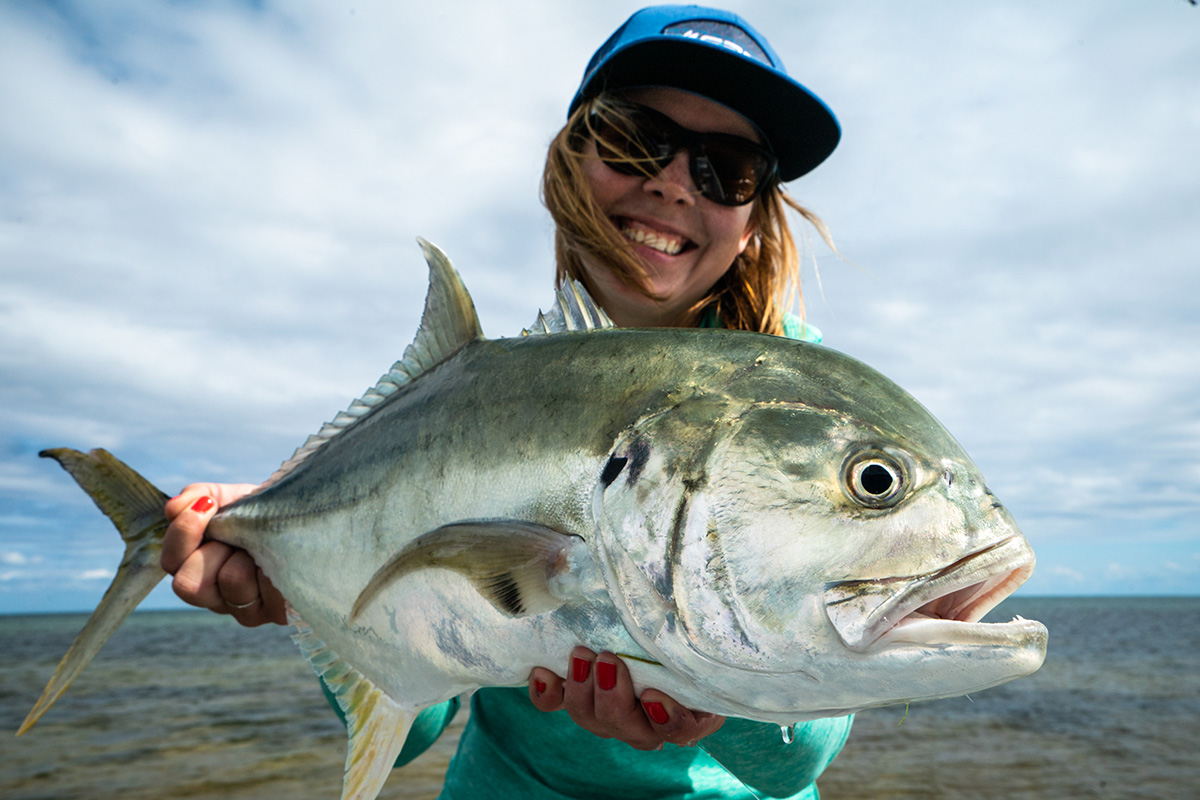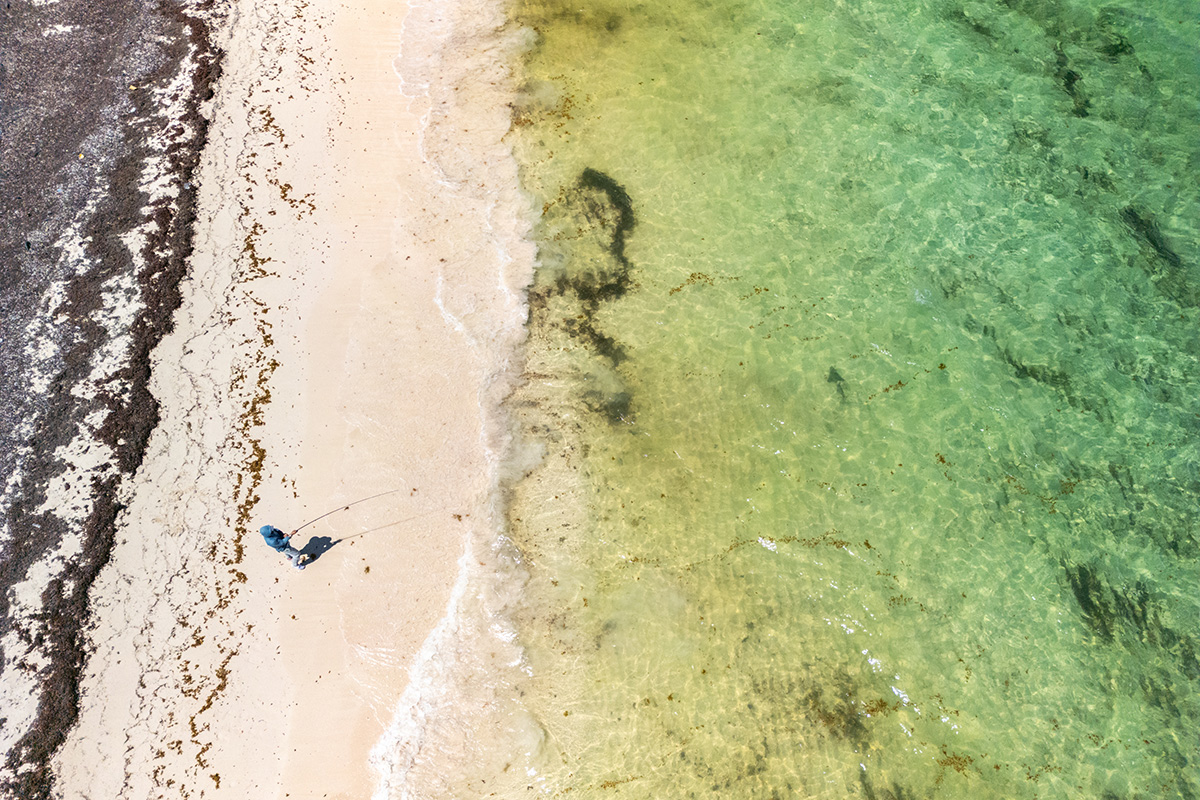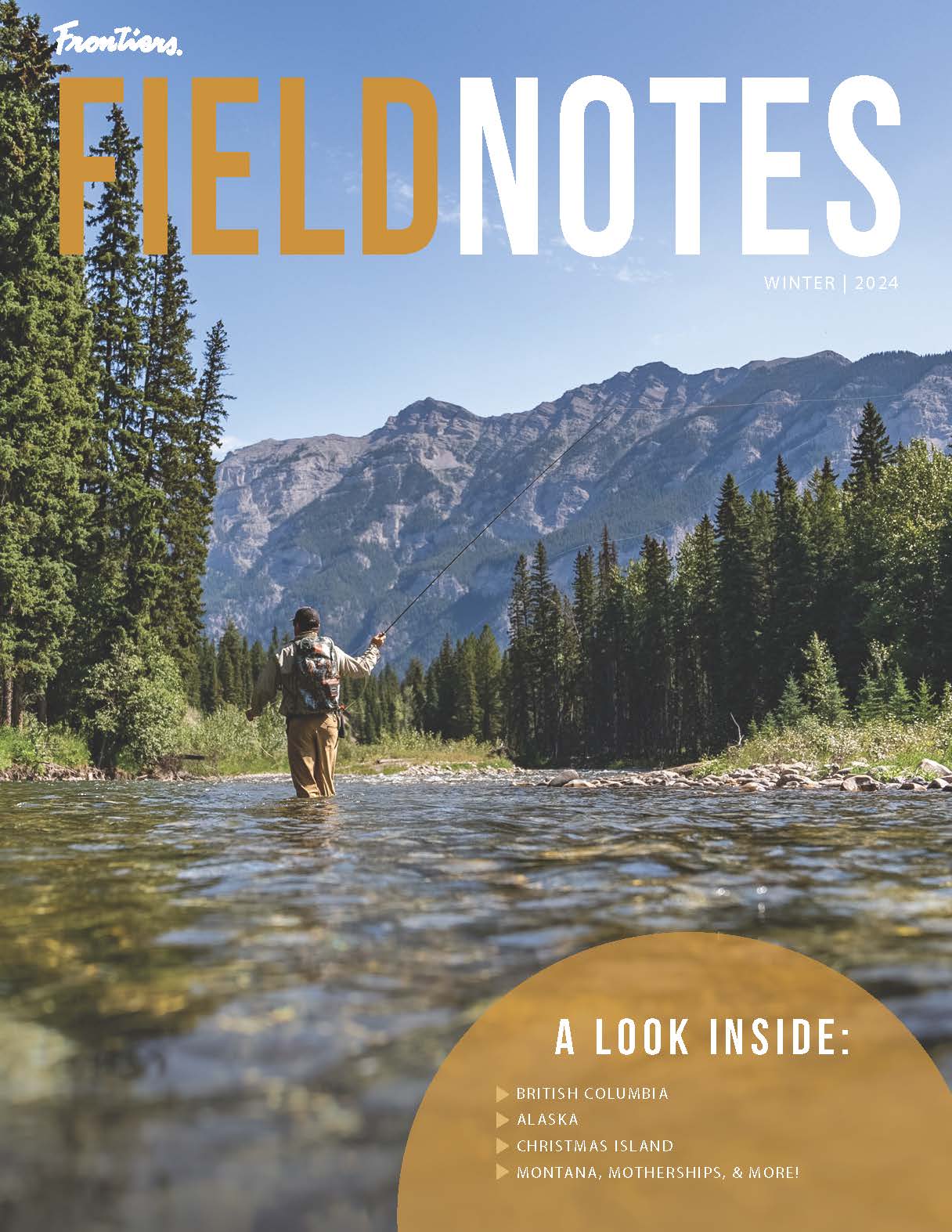
Look around several travel websites or walk around a few fly fishing tradeshows, you will no doubt hear the word “variety” repeatedly. For some of us, the term may elicit an audible, “ugh”, with or without an accompanying eye roll; others will tune out, walk away, close the tab. In many ways, the term has become a cliché of the fishing industry when trying to promote destinations. Bear with me a moment. There is still truth and real value to the intended meaning of variety, particularly when considering flats destinations like Mexico.
Variety of Species
Mexico’s diverse ecosystem means that every day on the water brings new experiences and the chance to test your skills against different species. Mexico features honest, year-round grand slam opportunities for bonefish, tarpon, and permit, along with snook, barracudas, jacks, and other fish. For Caribbean-area flats fisheries, Mexico is up there with the very best, if not at the top itself, with its wide array of species.
The guides and lodges are tuned into these various fish species and their patterns. If you’ve ever tried to fly fish from a deep sea boat when the crew is trained for conventional gear, you know the frustrations that can follow the relative nuances and subtleties of fly fishing for saltwater species. That’s not the case with Mexico and its flats fisheries. Whatever you want to fish for, these teams will be ready to position you for success. This is most noticeable with the 2-guide teams around Ascension Bay and Chetumal Bay that excel at the fine art of permit fishing. Their attention to detail with boat handling and positioning, line management, and knowing when to hop off and wade for a spotted permit can make the subtle but critical differences between success and failure on the flats.
Variety of Fishing Scenarios
Beyond species, Mexico offers a variety in the sense of fishing scenarios that can accommodate varying conditions. Are the tides not quite right for permit? Well then let’s go after bonefish, for instance. Is the cloud cover limiting visibility or has the wind kicked up? Often guides will shift the day’s fishing plan towards mangrove-lined flats and lagoons.
Mangroves
From baitfish to bonefish, mangroves are central to the health and develop of many flats’ environments and species. Flats anglers often visit mangrove areas to target juvenile tarpon or snook, although they may encounter bonefish, permit, jacks, snapper or other specials as well. Typical fishing scenarios include sight-fishing in clear-water mangrove edges; casting to rolling tarpon in deeper holes; or blind-casting to likely ambush points. Mangrove-lined flats and lagoons have saved many a windy or cloudy day for saltwater anglers and guides. The trees help to block the wind and cut the glare, at least to some degree. That window of opportunity can be just enough for fly anglers to experience success.
Ocean-side Flats
Everything seems possible on these flats. Larger tarpon, permit of all sizes, cudas, jacks, sharks, and cubera snapper can roll up on these flats at any time. Often these fish are looking to feed, making them ideal candidates to engulf a fly for an angler that can react quickly when shots occur. More exposure to wind and waves, along with deeper depths, can make these flats more condition-dependent and physically demanding on both guide and angler.
Light-bottomed Flats
Ask any flats angler what keeps him or her coming back for more, and you’re likely to hear something about sight-fishing. It is truly thrilling to see a fish turn on your fly or kick its tail to pounce on your offering. While many anglers travel with sight-fishing in mind, not all destinations offer it equally. Sight-fishing is largely dependent on three conditions: water clarity, sunlight, and the color of the flat’s bottom. Most of the flats fishing in Mexico, particularly on the southern Yucatan, involves light-bottomed flats in clear water. You can expect opportunities for bonefish on the shallower inside edges of the flat, and possibilities for permit on the outer or deeper edges of a flat. Tarpon, cudas, jacks, and other species are distinct possibilities as well. That’s not to say you won’t ever fish deeper holes or drop-offs, look for fish over turtlegrass flats, or pole through churned up, tannic, or otherwise less-clear waters while in Mexico. As with all aspects of a saltwater trip, trust your guide, hope for the best conditions, and enjoy every opportunity you get on the flats.
Seasonal/Conditional Phenomena
First, let’s talk tarpon. Where would you include in a (informal) global Top 5? Absolutely, we must start with the Florida Keys. We all love, respect, and – let’s be honest – envy, the Keys for their superb tarpon fishing. Some areas of Cuba have strong reputations for their tarpon fishing. We should certainly mention Belize, with Savannah Flat near Ambergris Caye, along with other flats and deeper channels around the country’s fisheries, that have both resident and migratory tarpon. And then… where? How about Mexico. While strictly speaking not a new phenomenon, word is spreading that Mexico, particularly areas like Ascension Bay, can have very good adult tarpon fishing during the migratory months of late spring and summer. What, in fact, constitutes “good” adult tarpon fishing? I am referring to sight-fishing for schools of tarpon, ranging from 50 to +100-lbs, over light-bottomed flats and edges with floating lines. These fish do not get the angling pressure of, say, South Florida, meaning they tend to respond relatively happily to well-placed (and some not-so-well-placed) flies. You might even see tarpon near, or even directly mixed in, with schools of permit for the ultimate head-exploding, what-fly-rod-should-I-have-in-my-hand scenarios on the bow.
In addition to migratory tarpon, other seasonal opportunities in Mexico include a higher prevalence of large bonefish in the fall months and an increased likelihood of seeing big, mature snook out on the flats (away from hard-to-reach lies deep within mangrove roots, where these fish might otherwise reside). All three of these seasonal scenarios – summer migratory tarpon, big bonefish in the fall, and large snook in the winter – are common knowledge for many saltwater anglers and available in some other countries’ flats fisheries. And yet, each of these scenarios can be incredibly enjoyable for the angler that times a trip well, with thoughtful planning and a bit of good fortune, to hit them just right.
Looking for something less common? Weeds. Not the ones growing in your lawn. I am referring to sargassum, which in many coastal areas is considered quite the nuisance (to put it mildly). Depending on factors like wind and currents, large mats of sargassum weeds can enter the Mexican fisheries during certain times of the year. While annoying to beach-goers and prohibitive to some angling scenarios, many lodges and guides are now figuring out and dialing-in unbelievable fishing opportunities corresponding to these weeds. In and around these weed mats, permit and tarpon will feed heavily on the abundance of crabs, shrimp, and bait, creating a natural chum-like frenzy with significantly lowered inhibitions for these otherwise difficult fish. The resulting fish action can be, well, phenomenal.
Variety: at What Cost?
What’s the catch, where’s the rub, you may wonder? Some of the likely downsides or tradeoffs for variety are non-issues in Mexico. You can expect both quantity and quality of permit, for instance. If you want shots at large adult tarpon, not just the juveniles, then book a trip during May, June, or July when the migration brings these fish to the Yucatan fisheries. You may have heard “Mexican bonefish are small”. True, the average size on the Yucatan cannot compare to the Bahamas, for instance. That said, tell your Mexican guide at the beginning of the day (or week) that you want a couple of shots at larger bones. Based on my experiences in Ascension, Espiritu, and Chetumal Bays, your guide will have a few likely flats or lagoons known to hold bonefish you would gladly brag to your friends about landing.
For anglers unphased by the media’s portrayal of travel safety, Mexico is an incredible opportunity to experience quality flats fishing for a variety of species. With convenient flight itineraries to Cancun, Tulum, and Merida along with reasonably priced and high-quality lodge options, anglers can visit these prolific flats fisheries annually or even multiple times per year. Whether it’s your first flats trip or your fiftieth, we highly recommend Mexico. In fact, it is the destination that many of our staff here at Frontiers choose to spend their own personal time and money when looking to chase tarpon, permit, and bonefish on the flats.
If you’re interested in learning more about Mexico, feel free to contact me, Ben Hoffman.

















